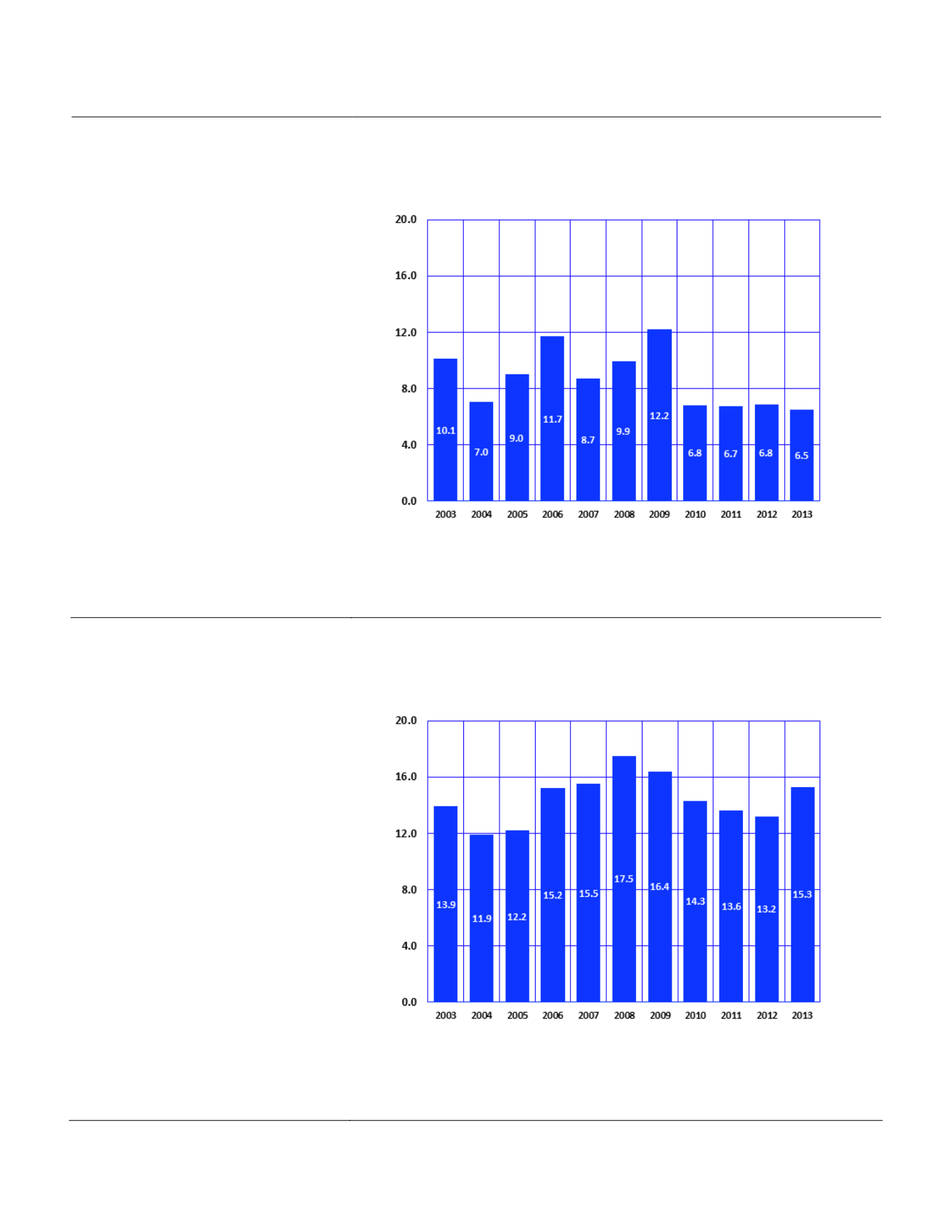
3A. NON-SEXUALLY TRANSMITTEDDISEASES
Shigellosis
is
an infectious disease caused
by a group of bacteria called
Shigella
that
can cause diarrhea in humans. To spread
from one person to another,
Shigellae
can be transmitted through contaminated
foods, sexual contact, and water used for
drinking or recreational purposes.
From
2003 ? 2013,
shigellosis
was the
third most common enteric disease to
afflict Arizonans after
campylobacteriosis
and
salmonellosis
(
Table3A-1
).
The number of reported cases of
shigellosis
in 2013 was 428, similar to
the number of cases observed in 2012 (n
= 444). The incidence rate of
shigellosis
in 2013, 6.5 cases per 100,000, was
fairly consistent with rates observed over
the past three years (
Figure 3A-3
).
Figure3A-3
Trends in the IncidenceRates
a
of Shigellosis byYear,
Arizona, 2003-2013
Note:
a
Number of reported cases per 100,000 population.
Salmonellosis
is a bacterial infection.
Most of those who are infected with
Salmonella
develop diarrhea, fever, and
abdominal cramps.
The incidence rate of s
almonellosis
increased
15.9
percent
from
13.2/100,000 in 2012 to 15.3/100,000 in
2013 (
Figure 3A-4
). The risk of
salmonellosis
was substantially higher in
Graham
(42.2/100,000),
Greenlee
(36.7/100,000),
and
Apache
(34.6/100,000) counties (
Table5F-2
).
There were no Arizona residents who died
from
salmonellosis
in 2013 (
Table 3A-
2
).
Figure3A-4
Trends in the IncidenceRates
a
of Salmonellosis
b
byYear,
Arizona, 2003-2013
Notes:
a
Number of reported cases per 100,000 population;
b
Excluding S. Typhi and S. Paratyphi.
Arizona Health Status and Vital Statistics 2013
209


